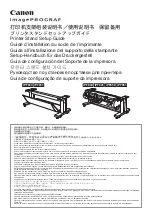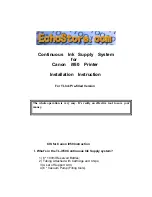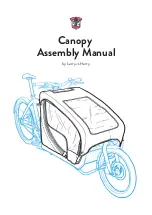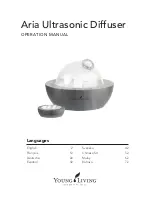
B-1
OPERATION
Welding Current Selection
Each position on the current selector switch is marked with the
output amperes for that setting. Turn the switch to the current
required for each application.
There is a slight amount of play in each switch position. It is good
practice to move the switch back and forth once within this play
after switching to a new position. This wiping action keeps the
contacts free from dirt and oxides.
Welding Polarity Selection
To get the best results with today’s arc welding electrodes, it is
important to use the proper polarity. The AC/DC Arc Welder permits
the choice of AC, DC(+) or DC(-), giving additional versatility.
Lincoln Electrodes are listed in the chart at the end of this manual.
Each electrode is designed to work best on either DC(+), DC(-) or AC.
In this electrode chart the preferred polarity is listed first. This is the
polarity which should be used - when available - for best results.
Duty Cycle
(For Codes 11604 and below). The 60 Hz welders are rated 20% duty
cycle and the 50 Hz welders are rated 15% duty cycle for the welding
current shown on each switch position.
(For Codes 11674 and above). The 60 Hz welders are rated 20% duty
cycle and the 50 Hz welders are rated 13% duty cycle for the welding
current shown on each switch position.
Duty cycle is based on a ten minute period. This means that the arc
can be drawn for 2 minutes out of each ten minute period (with a
20% duty cycle unit) without any danger of overheating. If the welder
is used for more than 2 minutes during several successive ten minute
periods, it may overheat. Be sure to leave the unit “on” during each
10 minute period to let the fan motor run for adequate cooling.
Overheating reduces welder life.
Circuit Breakers
AC/DC models above Code 8800 have an internal circuit breaker to
prevent overheating when welding on DC. The breaker will trip and
shut off the DC welding output if the duty cycle is exceeded or if the
cooling air flow is blocked. The cooling fan will continue to run and
the DC welding output will automatically come on when the breaker
has cooled and resets.
How to Learn Stick Welding
Refer to “Learning to Stick Weld” (LTW2) in the operator manual
section of www.lincolnelectric.com
Electrode Selection Guide
See the following Electrode Selection Guide and additional electrode
selection information. Also refer (C2.10) for Stick Electrode Welding
Guide and electrode sizes: www.lincolnelectric.com.
Selecting Electrodes
Which electrode is best for the particular job . . . how do you use it?
These are important questions because the cost, quality, and
appearance of your work depends on proper electrode selection and
application. MILD STEEL ELECTRODES may be classified into the
following groups:
Out-of-Position Group (E6011)
This group includes electrodes which have a snappy, deep
penetrating arc and fast freezing deposits.
These electrodes are used for general purpose all-position fabrication
and repair welding; also the best choice for pipe welding and sheet
metal butt, corner and edge welds. They can be used for repair work
when dirt, grease, plating or paint cannot be completely cleaned from
the steel. Typically used with motions “A’’ and “B’’ (below) for the
first pass on vertical-up welds.
High-Deposit Group (E6027, E7024)
This group includes the heavy coated, iron powder electrodes with
their soft arc and fast deposit rates. These electrodes have a heavy
slag and produce exceptionally smooth beads. They are generally
used for production welding where all work can be positioned for
downhand welding. Stringer beads, with drag technique, are always
preferred over weave passes with these electrodes.
High-Speed Group (E6012, E6013, E7014)
This group includes electrodes which have a moderately forceful arc
and deposit rates between those of the out-off position and high-
deposit electrodes. They are primarily general purpose production
electrodes especially for downhill fillets and laps or short and irregular
welds that change direction or position. Also widely used in
maintenance and recommended for sheet metal fillet and lap welds.
Motion “D’’ (below) is generally used for vertical-up welding, but
motions “A” and “B” are also suitable.
Low Hydrogen Group (E7018, E7028)
These electrodes are generally called “low hydrogen.” The name
comes from the fact that their coating contains little hydrogen in
either moisture or chemical form. Low hydrogen electrodes offer
these benefits: outstanding crack resistance, lowest porosity on
sulphur bearing steels, and capable of X-ray quality deposits. Thus,
they are the first choice when welding “problem” steels. E7018 can
be used in all positions, with Motion “C” recommended for the first
pass on vertical-up welds. NEVER use a whipping technique or a long
arc with these electrodes. ALWAYS fill craters by drawing electrodes
away slowly. ALWAYS keep these electrodes dry. Electrodes not used
within a few hours after a container is opened must be stored in heat
cabinets. LH-73 is recommended with the AC-225. Normally, DC(+) is
preferred for these electrodes.
AC-225-S & AC/DC 225/125
CAUTION
Do not turn the selector switch while welding as this will
damage the contacts.










































